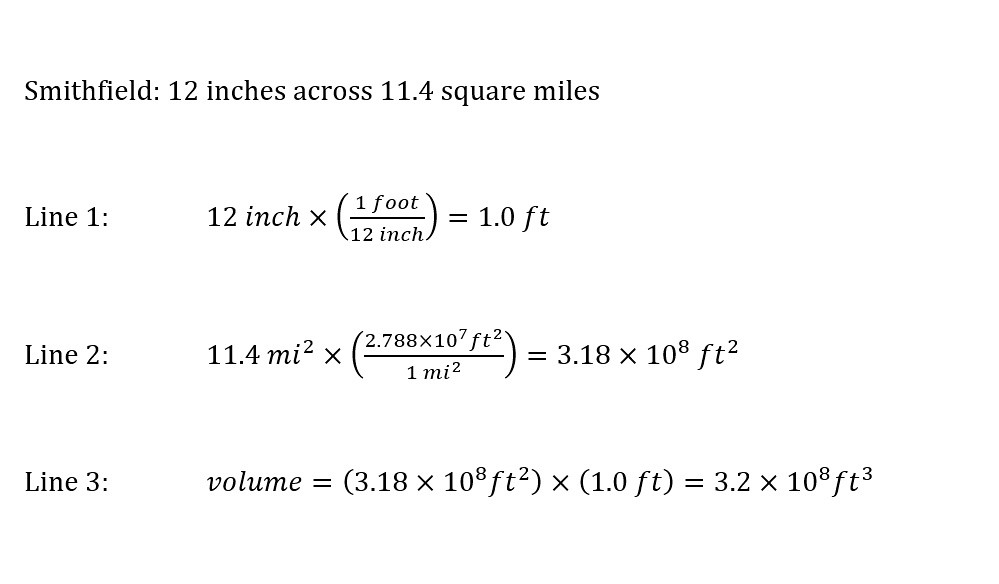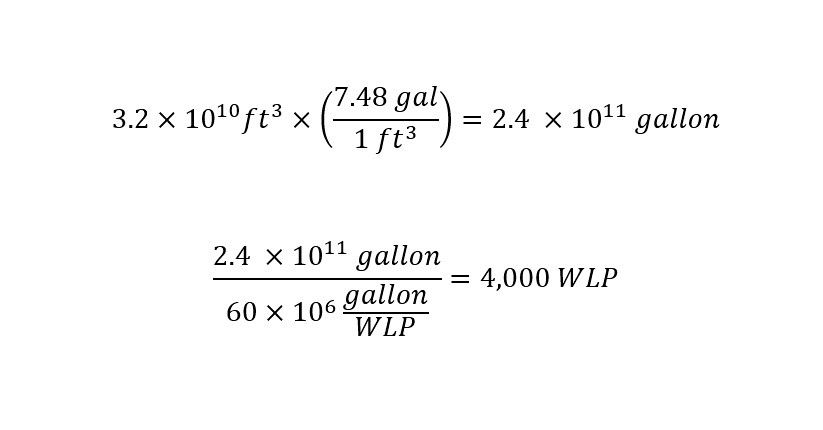Source: Fox News
There is no dispute that the damage done by Hurricane Florence has been tremendous and will not be repaired anytime soon. In fact, years from now, we will check in and see that there remains irreparable damage (mental health, loss of life, loss of health, loss of housing, loss of security, etc.). Last week, I wrote a blog post regarding a forecaster's model predicting that Hurricane Florence would drop enough rain to fill 18,400 Superdome stadiums. The total destruction stands to be enormous to say the least. With that being said, what would a letter look like from a Governor asking elected officials from Washington D.C. asking for funds to start the process of recovery?
One of the many underlying themes on this blog site is to provide letters or statements on various topics which relate to environmental health or public safety/health and society in general. First up is the letter written by Governor Henry McMaster to elected officials representing the state of South Carolina asking for money. Following the letter below is another letter justifying the amount of expense that is being requested. Without further ado, here is the letter from Governor Henry McMaster shown below:
The Honorable Lindsey Graham The Honorable Tim ScottThe Honorable Mark Sanford The Honorable Joe WilsonThe Honorable Jeff Duncan The Honorable Trey GowdyThe Honorable Ralph Norman The Honorable James E. ClyburnThe Honorable Tom Rice
To the Members of the South Carolina Congressional Delegation:As you know, for two and a half days Hurricane Florence slowly crept across North and South Carolina - battering our coast with hurricane force winds, storm surge, and massive amounts of rainfall. Deadly localized flash flooding washed out roads and bridges, submerged homes, and left residents stranded from Chesterfield all the way to Horry County.The rainfall and flooding in North Carolina is sending unheard of amounts of water into South Carolina along the Lynches, Great Pee Dee, Little Pee Dee and Waccamaw rivers. The damage in the northeastern part of our state will be catastrophic, surpassing anything recorded in modern history.I have asked President Trump to authorize federal disaster recovery funds in Public Assistance Categories A, B, C, D, E, F & G - as well Individual Assistance for 23 South Carolina counties through the Federal Emergency Management Agency (“FEMA”). They are: Berkeley, Calhoun, Charleston, Chester, Chesterfield, Clarendon, Darlington, Dillon, Dorchester, Fairfield, Florence, Georgetown, Horry, Kershaw, Lancaster, Lee, Marion, Marlboro, Orangeburg, Richland, Sumter, Williamsburg, and York counties.Public Assistance in these categories can include funding to support repairs for public assets, such as roads and bridges; water control facilities; building and equipment replacement; restoration and repairs to utilities; and public parks and beaches. Individual Assistance can be granted to persons for temporary housing, home repairs for individuals, dollars towards home replacement, and some other necessary needs.The South Carolina Emergency Management Division (SCEMD) along with the state Disaster Recovery Office (SCDRO), have provided preliminary financial impact and federal recovery fund estimates for Hurricane Florence in anticipation of actual on the ground damage assessments. These estimates are based primarily on information from Hurricane Matthew and incorporating various other planning factors and estimates. I have attached these estimates for your review.Hurricane Florence - $1,228,000,000Community Development Block Grant – Disaster Recovery ($540 million) - Disaster Relief Fund ($300 million) - Federal Highway Administration ($18 million) - Agriculture ($125 million) - Small Business Administration ($80 million) - National Flood Insurance Program ($165 million)On behalf of all South Carolinians that were affected by Hurricane Florence, I ask that you support the federal disaster recovery requests made by the state, our counties and municipalities.Thank you for considering this very important request. Should you have any questions or concerns, or if I can be of any further assistance, please do not hesitate to call.Yours very truly,Henry McMaster
The numbers cited in the letter above by Governor Henry McMaster might seem large and cause the reader question as to the merit of the need. At the same time, when the entire state is taken into account along with the wide diversity of economically disadvantaged groups, then the request for an appropriate amount seems reasonable. Not to mention, the fact that South Carolina has been hit recently (in the past few years) by other large Hurricanes which have caused their own respective damage too. Some of which still resides and is discussed in the disaster budget analysis letter. Below is a letter from the Agency which Governor McMaster asked to draw up the need (money values) for recovery from Hurricane Florence on South Carolina:
September 19, 2018The Honorable Henry McMasterState House1100 Gervais StreetColumbia, South Carolina 29201Dear Governor McMaster,Subject: Estimate for Community Development Blog Grant -- Disaster Recovery (CDBG-DR) grant funds associated with Hurricane Florence.This analysis is based upon the 19 September 2018 SCEMD Hurricane Florence Disaster Intelligence ASCOPE and upon the proposition/planning assumption that the state suffered substantial damage from Hurricane Florence, and that multiple rivers throughout the State have already, or will obtain Moderate, Major, and Record flood stages causing damage to both homes and infrastructure. This assumes that flooding will impact the entire watershed and numerous tributaries throughout the watershed. Finally it assumes up to 23 counties in South Carolina will be Presidentially Declared Disasters for both FEMA Public Assistance and Individual Assistance. Critical to CBDG-DR estimates is the Individual Assistance declaration.Based upon the Disaster Intelligence summary, the following South Carolina Counties have already, or will experience, Hurricane Florence damage from either the Hurricane itself or subsequent flooding and could potentially be declared: Horry, Dillion, Marion, Marlboro, Darlington, Chesterfield, Lancaster, York, Kershaw, Lee, Sumter, Florence, Clarendon, Williamsburg, Georgetown, Union, Fairfield, Newberry, Orangeburg, and Berkeley. Many of the above have one or more of the following rivers flowing through their counties: Waccamaw, Lumber, Rocky River, Little Pee Dee, Lynches, Black Creek, Black River, Great Pee Dee, Catawba, Wateree, and Santee. Each of these rivers have multiple tributaries and streams associated with the river.Three interrelated factors make up this analysis and form the basis for this estimate. First, Social Vulnerability Indexing which generally shows communities that have high portions of the population which do not have the means to recover themselves and are vulnerable to disaster impacts. Second, counties which have been previously declared by either Severe Storm 2015 or Hurricane Matthew 2016, or both, and are continuing to recover from those previous disasters. Repeated disaster events have significant and lasting impacts upon populations, communities, and counties. Finally, the number of major rivers and tributaries, which traverse these counties, which either have, or are predicted to be in Moderate, Major, or Record flood stage.Given these planning assumptions and above analysis, the best estimate for future CDBG-DR funds is $540 Million Dollars. Based upon early reporting, we believe the counties in the northeastern corridor will have substantial damage. This estimate is a snapshot in time and based upon the best available information. This estimate could increase or decrease. It is noteworthy that South Carolina has experienced 4 natural disasters within the last 4 years. Severe Storm in 2015 (Hurricane Joaquin), Hurricane Matthew 2016, mobilization but no Individual Assistance declaration for Hurricane Irma in 2017, and now Hurricane Florence in 2018. These natural disasters have produced a drastic impact upon numerous communities throughout rural South Carolina.CDBG-DR grants are the Disaster funding of last resort, and can be used in broad categories for housing, infrastructure, and economic development, which meet the HUD National objectives associated with elimination of blight and slum, urgent need, and benefit for low to moderate income citizens. Many Low to Moderate income citizens have been impacted by this disaster. The State of South Carolina, as well as local jurisdictions within the State have received CDBG-DR funding in the past specifying in response to Severe Store (Hurricane Joaquin) 2015 and Hurricane Matthew in 2016. South Carolina has an exceptional track record with the wise use of these funds.Regards,Jeffrey R. SandersonProgram Management DirectorSouth Carolina Disaster Recovery OfficeDepartment of Commerce
The analysis above really drives home the stark reality that not every community is treated or funded equally in the State of South Carolina. What solution can solve the disparity is beyond the reach of the present blog post. What is within reach of the present blog post is the transparency provided by the letter from Governor Henry McMaster and the budget analysis letter -- both of which are shown above. At the same time, the letters provide the reality that there are parts of the State which might not ever recover. Which means the communities are continuously in a "State of Repair" from one Hurricane to the next -- which is wrong.
Money should be diverted through a block grant and extra funding by FEMA along with more money from Congress. Now is not the time to perpetuate the persistent state of leaving residents behind. As has been done in the past and indicated in the letter above. Americans should be banding together to help the Eastern part of Our Country repair and return to a state of normalcy. But first, a total assessment needs to be done along with the final passing of Hurricane Florence. Stay tuned and stay safe.
Related Blog Posts:
Boston Natural Gas Explosion Reveals Old Piping Needs Replacement - Enough To Travel To Colorado?
A Forecaster Predicts That Hurricane Florence Will Drop Enough Rain To Fill 18,400 Mercedes-Benz Superdomes
Hurricane Harvey Drops Enough Rain On Houston To Fill 560 Dallas Cowboy Stadiums
How Much Water Is Contained In All Oceans Around The Globe?
Storm Raises Water Level In Lake Cachuma By 31 feet, How Much Water Is That?
How To Make Sense Of Water Flowing At 100,000 Cubic Feet Per Second
Can 11 Trillion Gallons Of Water Fill 14,000 Dallas Cowboys Stadiums?
How Much Rain Did The East Coast Receive From Hurricane Matthew?
How Much Rain Did Haiti Really Receive?
How Big Was The "Water Bomb" Of Rainfall In Macedonia?
How Much Rain Did Elliot City (Maryland) Really Receive?
If The Mosul Dam Breaks, The City Of Mosul Would Be Under 65 Feet Of Water?
What is the volume of water in a few inches of rain?
Volume of Waste in the Mine Spill (in Brazil) Equivalent to 78 Deepwater Horizon Oil Spills
















